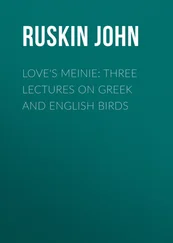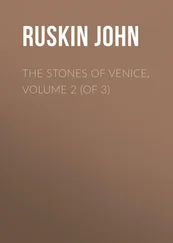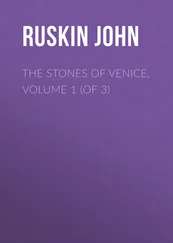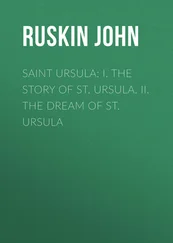John Ruskin - Proserpina, Volume 2
Здесь есть возможность читать онлайн «John Ruskin - Proserpina, Volume 2» — ознакомительный отрывок электронной книги совершенно бесплатно, а после прочтения отрывка купить полную версию. В некоторых случаях можно слушать аудио, скачать через торрент в формате fb2 и присутствует краткое содержание. Жанр: foreign_antique, Биология, literature_19, foreign_edu, на английском языке. Описание произведения, (предисловие) а так же отзывы посетителей доступны на портале библиотеки ЛибКат.
- Название:Proserpina, Volume 2
- Автор:
- Жанр:
- Год:неизвестен
- ISBN:нет данных
- Рейтинг книги:5 / 5. Голосов: 1
-
Избранное:Добавить в избранное
- Отзывы:
-
Ваша оценка:
- 100
- 1
- 2
- 3
- 4
- 5
Proserpina, Volume 2: краткое содержание, описание и аннотация
Предлагаем к чтению аннотацию, описание, краткое содержание или предисловие (зависит от того, что написал сам автор книги «Proserpina, Volume 2»). Если вы не нашли необходимую информацию о книге — напишите в комментариях, мы постараемся отыскать её.
Proserpina, Volume 2 — читать онлайн ознакомительный отрывок
Ниже представлен текст книги, разбитый по страницам. Система сохранения места последней прочитанной страницы, позволяет с удобством читать онлайн бесплатно книгу «Proserpina, Volume 2», без необходимости каждый раз заново искать на чём Вы остановились. Поставьте закладку, и сможете в любой момент перейти на страницу, на которой закончили чтение.
Интервал:
Закладка:
The pansy of the Wengern Alp in specialty, and of the higher, but still rich, Alpine pastures. Full dark-purple; at least an inch across the expanded petals; I believe, the 'Mater Violarum' of Gerarde; and true black violet of Virgil, remaining in Italian 'Viola Mammola' (Gerarde, ch. 298).
36. IV. VIOLA AUREA. Golden Violet. Biflora usually; but its brilliant yellow is a much more definite characteristic; and needs insisting on, because there is a 'Viola lutea' which is not yellow at all; named so by the garden florists. My Viola aurea is the Rock-violet of the Alps; one of the bravest, brightest, and dearest of little flowers. The following notes upon it, with its summer companions, a little corrected from my diary of 1877, will enough characterize it.
" June 7th. —The cultivated meadows now grow only dandelions—in frightful quantity too; but, for wild ones, primula, bell gentian, golden pansy, and anemone,—Primula farinosa in mass, the pansy pointing and vivifying in a petulant sweet way, and the bell gentian here and there deepening all,—as if indeed the sound of a deep bell among lighter music.
"Counted in order, I find the effectively constant flowers are eight; 5 5 Nine; I see that I missed count of P. farinosa, the most abundant of all.
namely,
"1. The golden anemone, with richly cut large leaf; primrose colour, and in masses like primrose, studded through them with bell gentian, and dark purple orchis.
"2. The dark purple orchis, with bell gentian in equal quantity, say six of each in square yard, broken by sparklings of the white orchis and the white grass-flower; the richest piece of colour I ever saw, touched with gold by the geum.
"3 and 4. These will be white orchis and the grass flower. 6 6 "A feeble little quatrefoil—growing one on the stem, like a Parnassia, and looking like a Parnassia that had dropped a leaf. I think it drops one of its own four, mostly, and lives as three-fourths of itself, for most of its time. Stamens pale gold. Root-leaves, three or four, grass-like; growing among the moist moss chiefly."
"5. Geum—everywhere, in deep, but pure, gold, like pieces of Greek mosaic.
"6. Soldanella, in the lower meadows, delicate, but not here in masses.
"7. Primula Alpina, divine in the rock clefts, and on the ledges changing the grey to purple,—set in the dripping caves with
"8. Viola (pertinax—pert); I want a Latin word for various studies—failures all—to express its saucy little stuck-up way, and exquisitely trim peltate leaf. I never saw such a lovely perspective line as the pure front leaf profile. Impossible also to get the least of the spirit of its lovely dark brown fibre markings. Intensely golden these dark fibres, just browning the petal a little between them."
And again in the defile of Gondo, I find "Viola (saxatilis?) name yet wanted;—in the most delicate studding of its round leaves, like a small fern more than violet, and bright sparkle of small flowers in the dark dripping hollows. Assuredly delights in shade and distilling moisture of rocks."
I found afterwards a much larger yellow pansy on the Yorkshire high limestones; with vigorously black crowfoot marking on the lateral petals.
37. V. VIOLA MONTANA. Mountain Violet.
Flora Danica, 1329. Linnæus, No. 13, "Caulibus erectis, foliis cordato-lanceolatis, floribus serioribus apetalis," i.e. , on erect stems, with leaves long heart-shape, and its later flowers without petals—not a word said of its earlier flowers which have got those unimportant appendages! In the plate of the Flora it is a very perfect transitional form between violet and pansy, with beautifully firm and well-curved leaves, but the colour of blossom very pale. "In subalpinis Norvegiæ passim," all that we are told of it, means I suppose, in the lower Alpine pastures of Norway; in the Flora Suecica, p. 306, habitat in Lapponica, juxta Alpes.
38. VI. VIOLA MIRABILIS. Flora Danica, 1045. A small and exquisitely formed flower in the balanced cinquefoil intermediate between violet and pansy, but with large and superbly curved and pointed leaves. It is a mountain violet, but belonging rather to the mountain woods than meadows. "In sylvaticis in Toten, Norvegiæ."
Loudon, 3056, "Broad-leaved: Germany."
Linnæus, Flora Suecica, 789, says that the flowers of it which have perfect corolla and full scent often bear no seed, but that the later 'cauline' blossoms, without petals, are fertile. "Caulini vero apetali fertiles sunt, et seriores. Habitat passim Upsaliæ."
I find this, and a plurality of other species, indicated by Linnæus as having triangular stalks, "caule triquetro," meaning, I suppose, the kind sketched in Figure 1 above.
39. VII. VIOLA ARVENSIS. Field Violet. Flora Danica, 1748. A coarse running weed; nearly like Viola Cornuta, but feebly lilac and yellow in colour. In dry fields, and with corn.
Flora Suecica, 791; under titles of Viola 'tricolor' and 'bicolor arvensis,' and Herba Trinitatis. Habitat ubique in sterilibus arvis: "Planta vix datur in qua evidentius perspicitur generationis opus, quam in hujus cavo apertoque stigmate."
It is quite undeterminable, among present botanical instructors, how far this plant is only a rampant and over-indulged condition of the true pansy (Viola Psyche); but my own scholars are to remember that the true pansy is full purple and blue with golden centre; and that the disorderly field varieties of it, if indeed not scientifically distinguishable, are entirely separate from the wild flower by their scattered form and faded or altered colour. I follow the Flora Danica in giving them as a distinct species.
40. VIII. VIOLA PALUSTRIS. Marsh Violet. Flora Danica, 83. As there drawn, the most finished and delicate in form of all the violet tribe; warm white, streaked with red; and as pure in outline as an oxalis, both in flower and leaf: it is like a violet imitating oxalis and anagallis.
In the Flora Suecica, the petal-markings are said to be black; in 'Viola lactea' a connected species, (Sowerby, 45,) purple. Sowerby's plate of it under the name 'palustris' is pale purple veined with darker; and the spur is said to be 'honey-bearing,' which is the first mention I find of honey in the violet. The habitat given, sandy and turfy heaths. It is said to grow plentifully near Croydon.
Probably, therefore, a violet belonging to the chalk, on which nearly all herbs that grow wild—from the grass to the bluebell—are singularly sweet and pure. I hope some of my botanical scholars will take up this question of the effect of different rocks on vegetation, not so much in bearing different species of plants, as different characters of each species. 7 7 The great work of Lecoq, 'Geographic Botanique,' is of priceless value; but treats all on too vast a scale for our purposes.
41. IX. VIOLA SECLUSA. Monk's Violet. "Hirta," Flora Danica, 618, "In fruticetis raro." A true wood violet, full but dim in purple. Sowerby, 894, makes it paler. The leaves very pure and severe in the Danish one;—longer in the English. "Clothed on both sides with short, dense, hoary hairs."
Also belongs to chalk or limestone only (Sowerby).
X. VIOLA CANINA. Dog Violet. I have taken it for analysis in my two plates, because its grace of form is too much despised, and we owe much more of the beauty of spring to it, in English mountain ground, than to the Regina.
XI. VIOLA CORNUTA. Cow Violet. Enough described already.
XII. VIOLA RUPESTRIS. Crag Violet. On the high limestone moors of Yorkshire, perhaps only an English form of Viola Aurea, but so much larger, and so different in habit—growing on dry breezy downs, instead of in dripping caves—that I allow it, for the present, separate name and number. 8 8 It is, I believe, Sowerby's Viola Lutea, 721 of the old edition, there painted with purple upper petals; but he says in the text, "Petals either all yellow, or the two uppermost are of a blue purple, the rest yellow with a blue tinge: very often the whole are purple."
Интервал:
Закладка:
Похожие книги на «Proserpina, Volume 2»
Представляем Вашему вниманию похожие книги на «Proserpina, Volume 2» списком для выбора. Мы отобрали схожую по названию и смыслу литературу в надежде предоставить читателям больше вариантов отыскать новые, интересные, ещё непрочитанные произведения.
Обсуждение, отзывы о книге «Proserpina, Volume 2» и просто собственные мнения читателей. Оставьте ваши комментарии, напишите, что Вы думаете о произведении, его смысле или главных героях. Укажите что конкретно понравилось, а что нет, и почему Вы так считаете.












